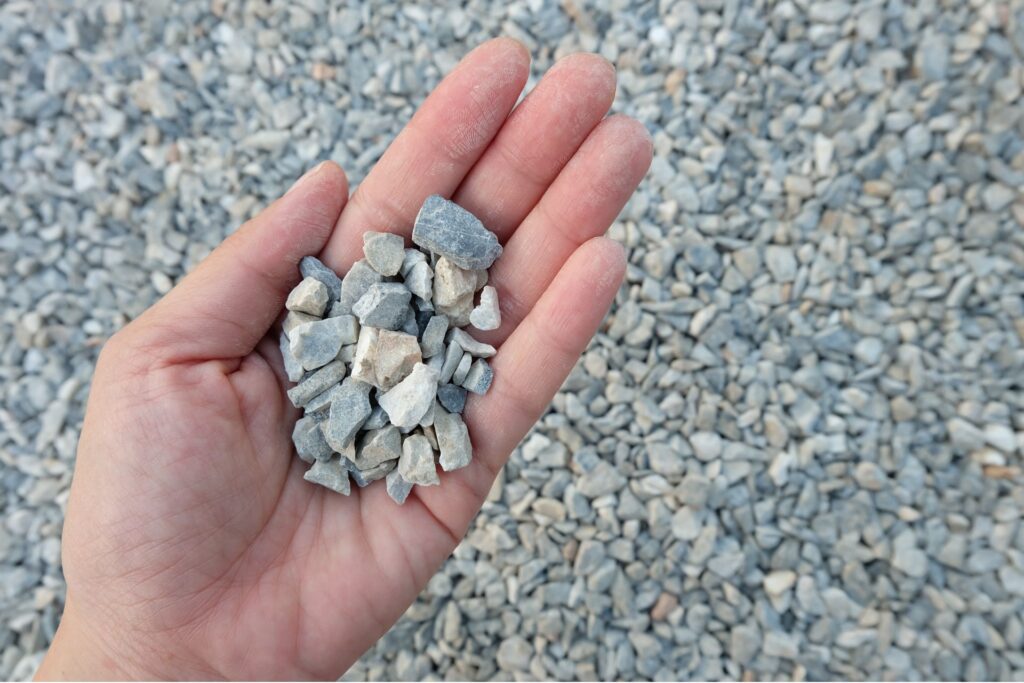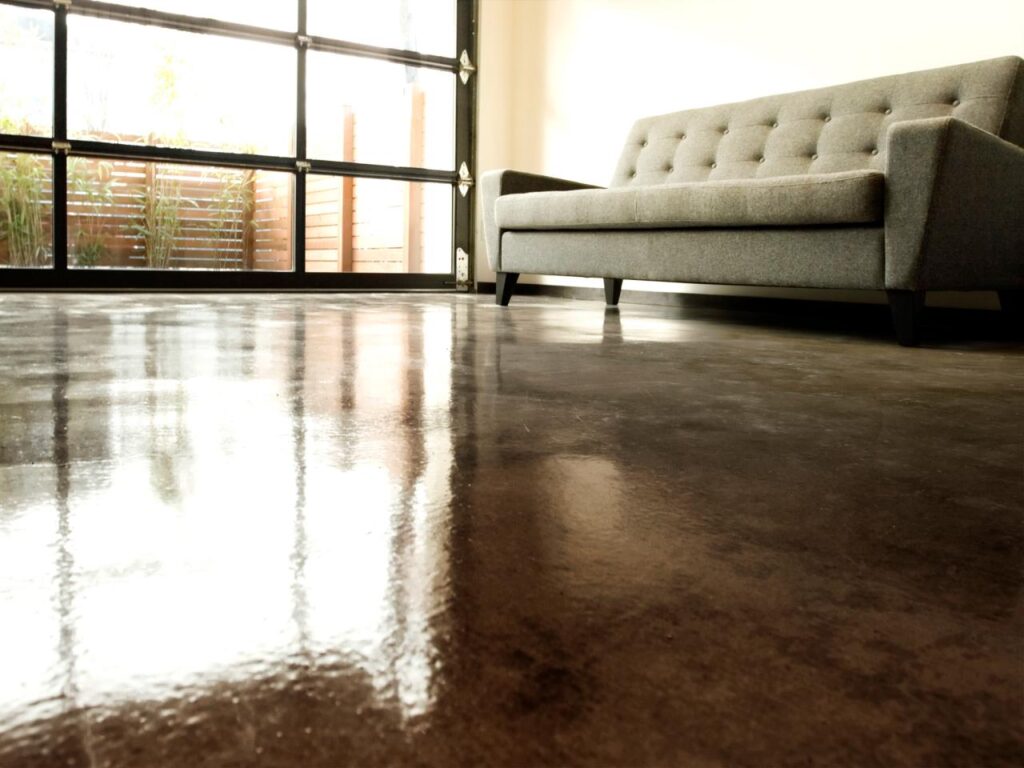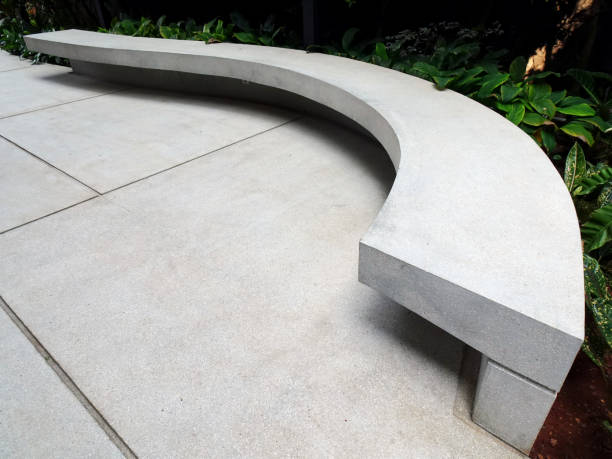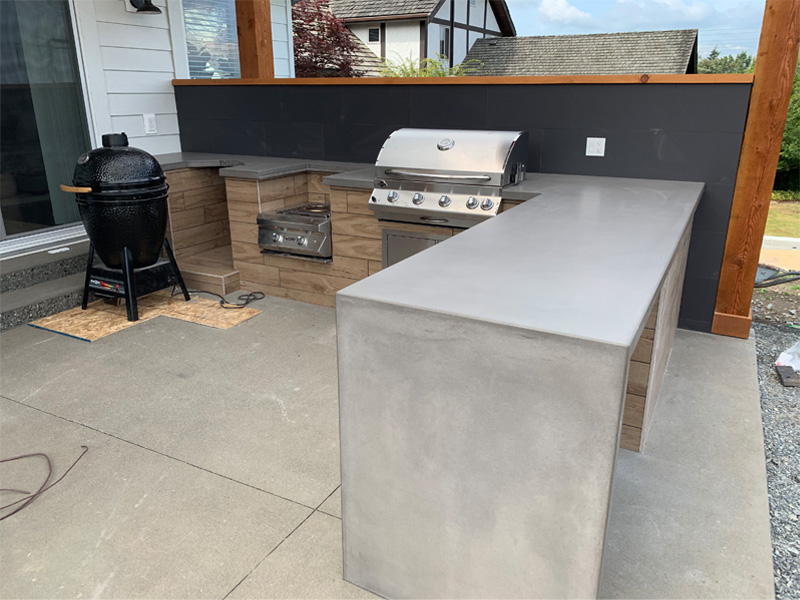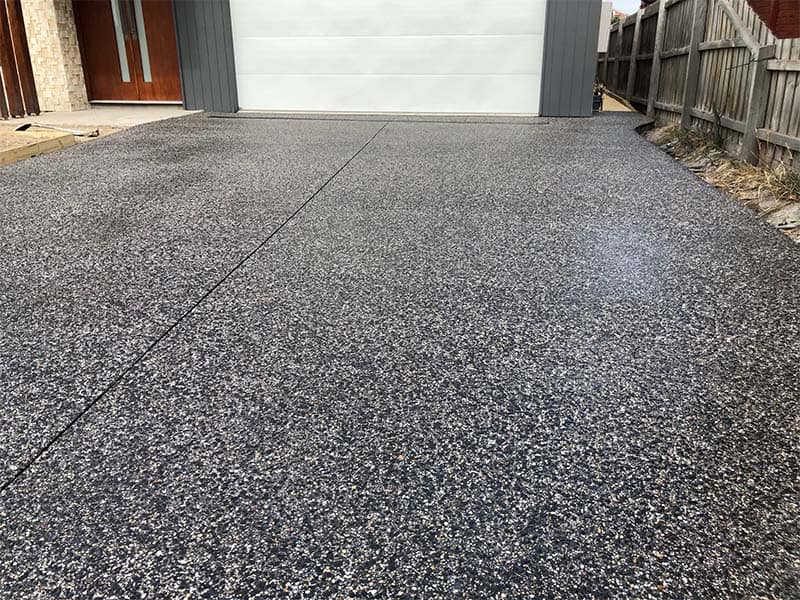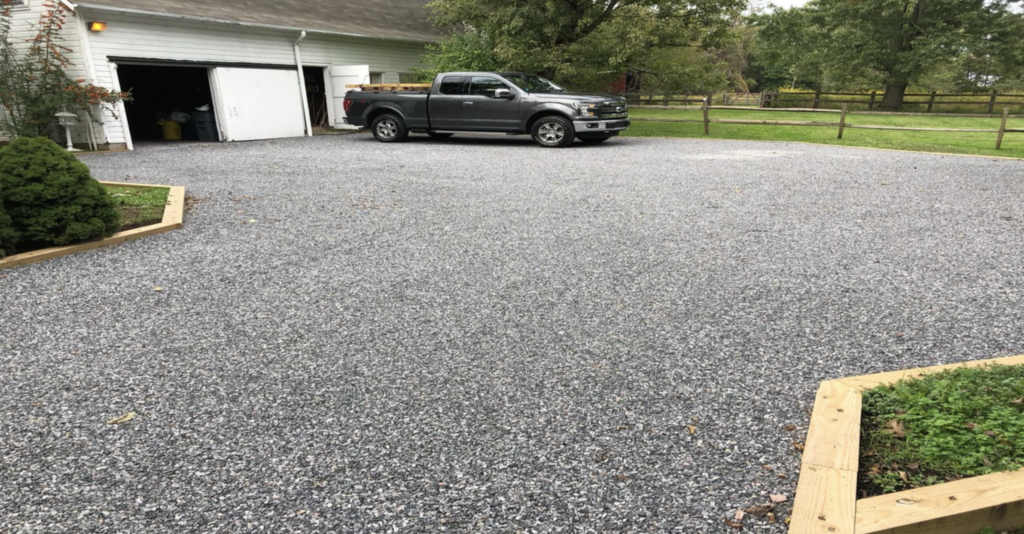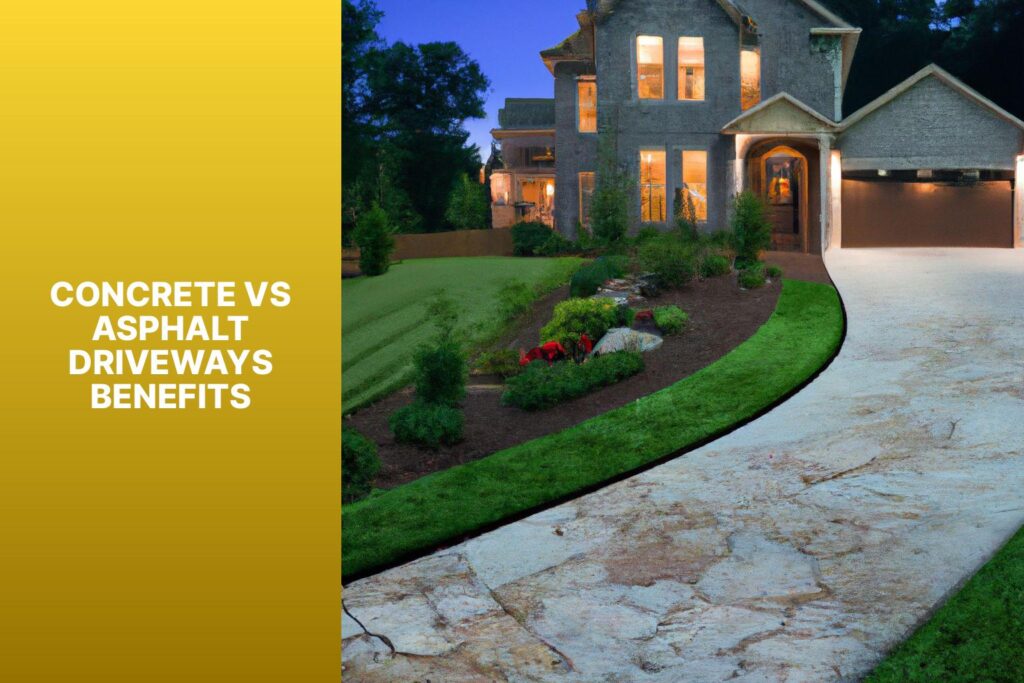Welcome to our comprehensive guide on whether you need gravel under concrete. If you’re planning a concrete project, whether it’s a driveway, patio, or foundation, understanding the role of gravel is crucial. Many DIY enthusiasts and even some professionals often overlook the importance of this essential component, leading to potential issues down the road. In this article, we’ll delve into the basics of concrete construction, explain why gravel is vital for stability and drainage, and provide practical tips on how to properly incorporate it into your projects. By the end, you’ll have a clear understanding of when and why gravel is necessary, ensuring your concrete structures are durable and long-lasting.
Gravel is essential under concrete to provide proper drainage, prevent water accumulation, and ensure a stable base that minimizes shifting and cracking. By creating a level surface and improving the durability of the concrete, gravel helps to extend the lifespan of your concrete structures, making it a crucial step in any concrete project.
- Basics Of Concrete Construction
- The Role Of Gravel In Concrete Construction
- Benefits Of Using Gravel Under Concrete
- When Is Gravel Not Necessary?
- How To Properly Lay Gravel Under Concrete
- Common Mistakes To Avoid
- Expert Tips And Recommendations
- FAQs: About Do I Need Gravel Under Concrete
- Why is gravel used under concrete?
- What type of gravel is best for under concrete?
- How much gravel should I use under a concrete slab?
- Can I pour concrete directly on dirt?
- What happens if I don’t use gravel under concrete?
- Is gravel necessary for small concrete projects?
- How do I prepare the ground for a gravel base?
- Should I compact the gravel before pouring the concrete?
- Can I use sand instead of gravel under concrete?
- Do local building codes require gravel under concrete?
- Conclusion
Basics Of Concrete Construction
What is Concrete?
Concrete is a versatile and durable building material used worldwide for various construction projects. At its core, concrete is a composite material composed of four primary ingredients: cement, sand, aggregate, and water.
Cement: The binding agent that holds the other components together. It’s typically made from limestone and clay, which are heated to form clinker, and then ground into a fine powder.
Sand: Fine aggregates that fill the gaps between the larger aggregate particles, providing additional strength and stability.
Aggregate: Coarse materials such as gravel or crushed stone that give the concrete its bulk and structural integrity.
Water: The essential element that initiates the chemical reaction known as hydration, causing the cement to harden and bind the ingredients into a solid mass.
This combination creates a robust material capable of withstanding significant stress and environmental conditions, making it ideal for a wide range of applications.
Importance of a Strong Foundation
A strong foundation is the cornerstone of any concrete structure, ensuring its longevity and stability. Here’s why a solid foundation is crucial:
1. Load Distribution: A well-constructed foundation evenly distributes the weight of the building, preventing uneven settling and potential structural damage.
2. Stability: It anchors the structure, providing resistance against external forces such as wind, earthquakes, and soil movement.
3. Durability: A robust foundation protects against moisture infiltration and soil erosion, which can weaken the structure over time.
Without a strong foundation, even the most meticulously built structures can suffer from cracks, shifts, and other forms of deterioration, leading to costly repairs and potential safety hazards.
Common Uses of Concrete
Concrete’s versatility and strength make it a popular choice for various construction projects, including:
Driveways: Concrete driveways are preferred for their durability and ability to withstand heavy vehicle traffic. They also offer a clean, polished look that enhances curb appeal.
Sidewalks: Providing safe and reliable pedestrian pathways, concrete sidewalks are resistant to weathering and can last for decades with minimal maintenance.
Patios: Concrete patios are an excellent choice for outdoor living spaces, offering a sturdy and customizable surface that can be designed to match any aesthetic.
Foundations: The most critical use of concrete is in building foundations. A concrete foundation provides the essential support needed for any structure, from small homes to large commercial buildings.
In summary, understanding the basics of concrete construction, from its composition to its various applications, is fundamental for anyone involved in building or renovation projects. By appreciating the importance of a strong foundation and recognizing the common uses of concrete, one can ensure the creation of durable, safe, and long-lasting structures.

The Role Of Gravel In Concrete Construction
What is Gravel?
Gravel is a naturally occurring aggregate composed of small, rounded stones or crushed rock. It’s a fundamental material in the construction industry, valued for its durability and versatility. Gravel used in construction comes in various types, each with unique characteristics suited for specific applications.
Types and Characteristics of Gravel Used in Construction
1. Pea Gravel: These small, rounded stones, typically around 1/4 to 3/8 inch in diameter, are named for their pea-like size. Pea gravel is smooth and aesthetically pleasing, often used for landscaping, driveways, and as a decorative base in concrete construction.
2. Crushed Stone: This type consists of angular, sharp-edged rocks that interlock well, providing excellent stability. Crushed stone is commonly used as a base material under concrete slabs, roads, and in drainage systems.
3. Bank Gravel: Also known as pit run or bank run, this naturally deposited mixture of sand, silt, and gravel is extracted from riverbanks and streambeds. It’s often used in construction projects where a strong, stable base is required.
4. Creek Rock: These smooth, rounded stones are typically found in riverbeds and are similar in appearance to pea gravel but larger. Creek rock is often used in decorative applications and for creating a stable base layer in concrete construction.
Purpose of Gravel Under Concrete
Gravel serves multiple critical functions when used as a base layer under concrete slabs, driveways, and foundations.
Drainage: Prevents Water Accumulation
One of the primary purposes of gravel is to facilitate proper drainage. When placed under concrete, gravel allows water to flow through its porous structure, preventing water from accumulating beneath the concrete slab. This is essential for avoiding potential issues such as cracking and shifting caused by water-induced pressure changes and freezing and thawing cycles.
Stability: Provides a Stable Base and Prevents Shifting
A stable foundation is crucial for the longevity and durability of any concrete structure. Gravel provides a firm and stable base by distributing the weight of the concrete evenly across the ground. The interlocking nature of crushed stone gravel, in particular, helps prevent the concrete from shifting or settling unevenly over time. This stability is vital for maintaining the structural integrity of concrete slabs, driveways, and foundations.
Even Surface: Ensures a Level Surface for Pouring Concrete
Gravel helps create a level surface on which concrete can be poured. An even base layer is essential for ensuring that the concrete sets evenly and uniformly. Without a level foundation, the concrete can form weak spots, leading to cracking and other structural issues. By using gravel as a base, contractors can achieve a smooth and level surface, enhancing the overall quality and durability of the finished concrete structure.
In summary, gravel plays a crucial role in concrete construction by providing drainage, stability, and a level surface. Its various types and characteristics make it a versatile material that can be tailored to meet the specific needs of different construction projects. Understanding the importance of gravel in concrete construction helps ensure that concrete structures are built to last, maintaining their strength and integrity over time.
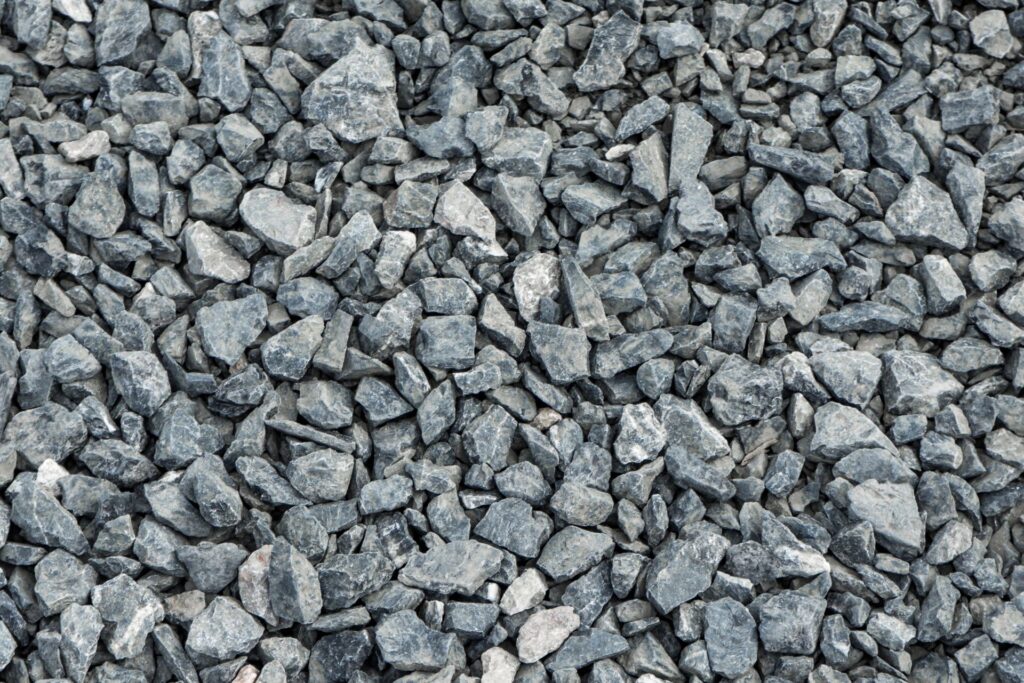
Benefits Of Using Gravel Under Concrete
When it comes to laying a solid foundation for concrete structures, using gravel underneath the concrete offers several significant advantages. This practice, often overlooked, plays a crucial role in ensuring the longevity and durability of the concrete slab. Here’s a detailed look at the benefits:
Enhanced Drainage
One of the primary benefits of using gravel under concrete is its ability to enhance drainage. Water is one of the biggest enemies of concrete. If water accumulates under the slab, it can cause the concrete to crack and deteriorate over time. Gravel acts as a drainage layer, allowing water to move away from the concrete slab. This prevents water from pooling underneath, which could lead to hydrostatic pressure and ultimately cause cracking or shifting of the concrete. By facilitating proper drainage, gravel helps maintain the structural integrity of the concrete over time.
Improved Stability
Another crucial benefit of using gravel under concrete is the improved stability it provides. Gravel creates a stable base that supports the concrete slab, distributing the load evenly and preventing settling. When the ground beneath a concrete slab is not properly prepared, it can lead to uneven settling and the formation of cracks. Gravel helps to create a firm foundation, ensuring that the concrete remains level and stable. This is especially important in areas with varying soil conditions, where uneven settling can be a significant issue. By using gravel, you create a more reliable and stable base for your concrete projects.
Longevity of the Structure
The durability and lifespan of a concrete structure are greatly enhanced by using gravel as a base layer. Concrete is a robust material, but its longevity can be compromised by various factors, including moisture and soil movement. Gravel helps to mitigate these issues by providing a barrier against moisture and reducing the movement of the underlying soil. This protective layer helps to prevent the concrete from cracking and breaking down over time. In addition, gravel improves the overall load-bearing capacity of the concrete, reducing the likelihood of structural failures. By ensuring proper drainage and stability, gravel significantly contributes to the long-term durability and performance of the concrete slab.
Incorporating gravel under concrete is a simple yet highly effective practice that offers numerous benefits. From enhanced drainage to improved stability and increased longevity of the structure, gravel plays a vital role in the success of concrete projects. Whether you’re working on a small patio or a large commercial foundation, taking the time to include a gravel base can make a significant difference in the performance and durability of your concrete. By understanding and utilizing the benefits of gravel, you can ensure that your concrete structures stand the test of time.
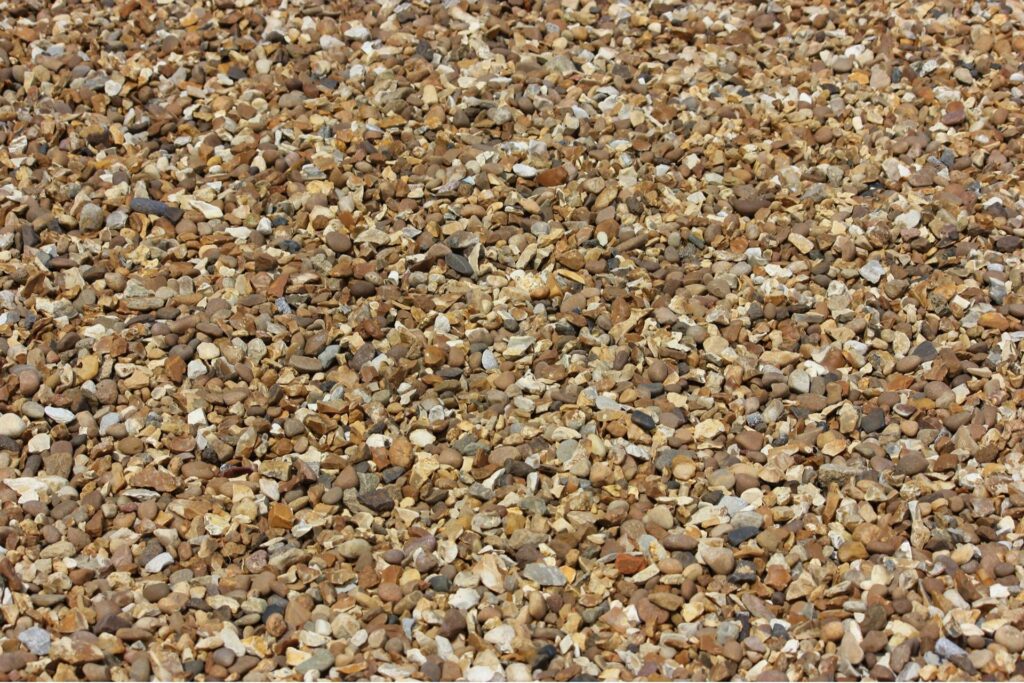
When Is Gravel Not Necessary?
Small Projects
Gravel is a popular choice for many outdoor projects, providing a solid base and good drainage. However, there are instances where it may not be necessary. For small projects like garden paths, gravel might not be required.
In the case of small garden paths, using gravel can sometimes be overkill. These projects often don’t need the level of support and drainage that gravel provides. Instead, materials like stepping stones or mulch can be more suitable and cost-effective. Stepping stones, for instance, offer a sturdy surface to walk on without the need for a gravel base. Mulch, on the other hand, provides a soft, natural look that can enhance the aesthetics of your garden path while still offering enough stability for foot traffic.
Another scenario where gravel might not be necessary is when you’re creating a simple patio area for light use. If you plan to use the space for light furniture like chairs and a small table, other materials such as pavers or bricks can be laid directly on a layer of sand. This approach can save time and money, while still providing a functional and attractive outdoor space.
Pre-existing Solid Base
There are also situations where the ground is already stable and well-drained, making gravel unnecessary. If your project site has a pre-existing solid base, you might be able to skip the gravel layer entirely. This is often the case in areas with naturally compacted soil or existing concrete or asphalt surfaces.
For example, if you’re laying a new patio over an old concrete slab, there’s no need for a gravel base. The concrete already provides a stable, solid foundation, allowing you to lay new pavers or tiles directly on top. This not only simplifies the installation process but also reduces costs and labor.
Similarly, in regions with naturally well-drained soil, the need for gravel is minimized. If the soil in your area is sandy or rocky, it likely drains well on its own, eliminating the necessity for an additional gravel layer. This is particularly beneficial for garden paths, where natural soil conditions can support the weight of foot traffic without additional stabilization.
In summary, while gravel is often a go-to material for providing stability and drainage, it’s not always necessary for every project. Small projects like garden paths or patios for light use, as well as areas with pre-existing solid bases or naturally well-drained soil, can often forgo the use of gravel. By assessing the specific needs of your project and the conditions of your site, you can determine whether gravel is essential or if you can opt for more cost-effective alternatives.
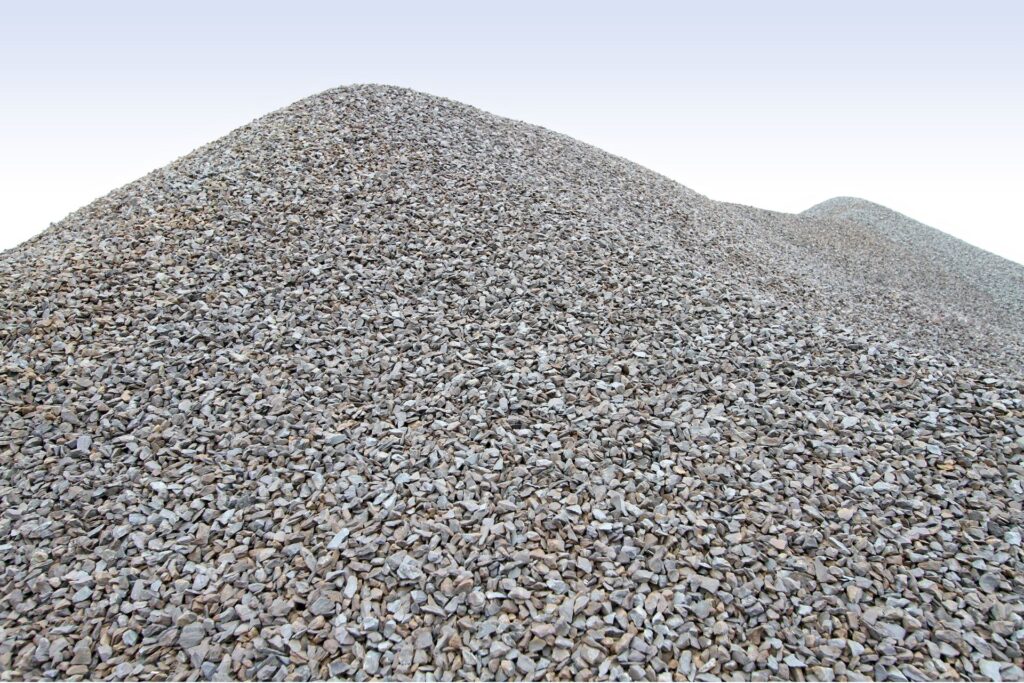
How To Properly Lay Gravel Under Concrete
Preparation
Proper preparation is crucial when laying gravel under concrete to ensure a stable and long-lasting foundation. The first step in this process involves clearing the area where the concrete will be poured. This means removing any vegetation, debris, or existing structures that might interfere with the new concrete slab. Once the area is clear, you need to measure the space accurately. Measuring helps determine the amount of gravel and concrete needed and ensures that the area is evenly sized and shaped. Use stakes and string to outline the space, creating a clear guide for the excavation process.
Choosing the Right Gravel
Selecting the appropriate type of gravel is essential for a solid concrete base. Not all gravel is created equal, and using the wrong type can lead to a weak foundation. For concrete bases, crushed stone is often the best choice. Crushed stone provides excellent compaction and stability, making it ideal for supporting the weight of the concrete. Common types of gravel used for this purpose include crushed limestone, granite, and quartzite. These materials are durable and offer good drainage properties, preventing water from pooling under the concrete and causing damage over time.
Laying the Gravel
Once the area is prepared and the right gravel is selected, it’s time to lay the gravel. Start by spreading the gravel evenly across the designated area. Use a shovel or a wheelbarrow to distribute the gravel, ensuring that it covers the entire space uniformly. Aim for a gravel layer that is about 4-6 inches thick, which is generally sufficient for most concrete projects. After spreading the gravel, use a rake to level it out. The goal is to create a smooth, even surface that will support the concrete without shifting or settling unevenly. Take your time with this step, as proper leveling is critical to the overall stability of the concrete slab.
Compacting the Gravel
Compacting the gravel is a vital step in ensuring that your concrete base is stable and long-lasting. Compaction eliminates air pockets and helps bind the gravel together, creating a solid foundation for the concrete. To compact the gravel, you will need a compactor, which can be rented from most hardware stores. There are different types of compactors, including plate compactors and roller compactors, both of which are suitable for this task. Start at one end of the gravel layer and work your way across, making multiple passes to ensure thorough compaction. Pay extra attention to the edges and corners, where the gravel is more likely to shift. A well-compacted gravel base will not only support the concrete better but also prevent issues such as cracking and settling in the future.
By following these steps carefully, you can create a strong, stable gravel base that will support your concrete project for years to come. Proper preparation, choosing the right materials, and taking the time to lay and compact the gravel correctly are all critical to achieving a durable and reliable concrete slab.
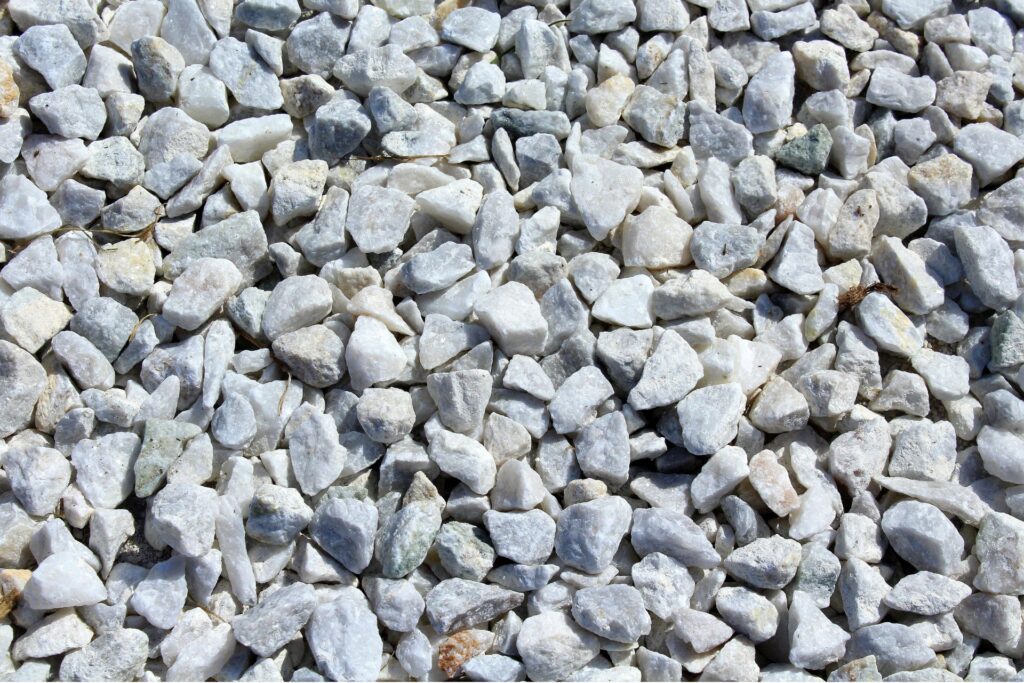
Common Mistakes To Avoid
When installing gravel for various construction or landscaping projects, avoiding common mistakes can save you from future headaches. Here are some pitfalls to be aware of:
Insufficient Gravel
One of the most frequent errors is using too little gravel. This can lead to several problems:
1. Lack of Stability: Gravel provides a stable base for structures, and insufficient gravel can compromise this stability. For example, in driveway construction, not enough gravel can result in a weak foundation, leading to uneven surfaces and potholes.
2. Poor Drainage: Gravel is often used to enhance drainage. If the gravel layer is too thin, water might not drain effectively, causing pooling and erosion issues. This can be particularly problematic in areas with heavy rainfall.
3. Increased Maintenance: With an inadequate gravel layer, you’ll likely face more frequent maintenance issues. Whether it’s a driveway or a garden path, insufficient gravel can cause the surface to degrade faster, necessitating more repairs and replacements.
Poor Compaction
Another common mistake is failing to properly compact the gravel. Here’s why proper compaction is crucial:
1. Surface Settling: Without proper compaction, gravel can shift and settle unevenly over time. This can create an unstable surface, which is especially problematic for driveways or paths where consistent, even surfaces are necessary.
2. Structural Integrity: Properly compacted gravel provides a solid foundation. If not compacted well, the gravel layer can become loose, leading to structural failures. For instance, in construction projects, this can compromise the stability of the building or structure.
3. Increased Erosion: Loose, uncompacted gravel is more susceptible to erosion from water and wind. This can cause the gravel to disperse, leading to thinning layers and the need for frequent replenishment.
Wrong Type of Gravel
Choosing the wrong type of gravel can also lead to significant issues. It’s important to select the right gravel for your specific project:
1. Inadequate Drainage: Different types of gravel have different drainage properties. Using gravel that doesn’t drain well can lead to water pooling and erosion. For example, using fine gravel in a driveway can result in poor drainage compared to coarser gravel types designed for that purpose.
2. Poor Aesthetic Fit: Gravel comes in various sizes, colors, and textures. Using the wrong type can clash with your landscape design or the intended use of the area. For instance, large, jagged gravel might not be suitable for a garden path whereas smoother, smaller gravel would be more appropriate.
3. Durability Issues: Some gravel types are more durable than others. Using less durable gravel can lead to quicker degradation and the need for more frequent replacement. For example, limestone gravel is more prone to erosion compared to granite gravel, which is harder and more durable.
By avoiding these common mistakes—ensuring you use enough gravel, compact it properly, and choose the right type for your project—you can create a stable, durable, and aesthetically pleasing surface that requires less maintenance and offers better performance over time.
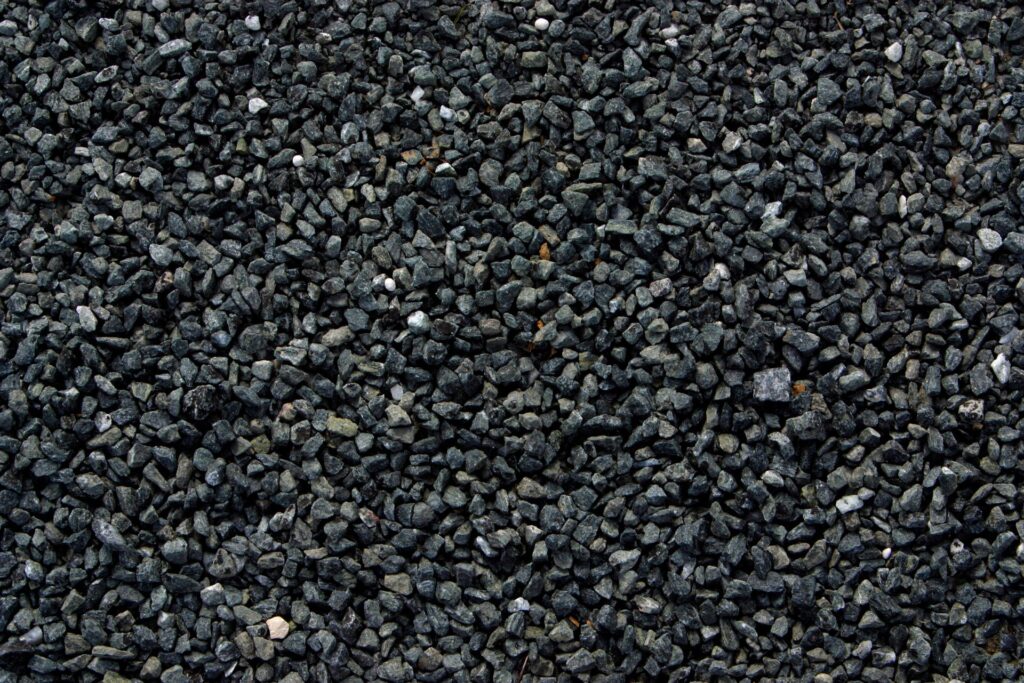
Expert Tips And Recommendations
Consulting with Professionals
When tackling a construction project, knowing when to consult with professionals can make a significant difference in the success and longevity of your project. It’s advisable to seek expert advice during the planning stage to ensure your design is both practical and compliant with local building codes. Consulting professionals such as architects, structural engineers, and contractors can provide insights into the feasibility of your project, helping to identify potential issues before they arise. Additionally, during the construction phase, regular consultations with experts can ensure that the work is progressing correctly and according to plan, minimizing costly errors and rework.
Local Regulations and Standards
Understanding and adhering to local building codes and standards is crucial for any construction project. Each region may have specific regulations governing various aspects of construction, from structural integrity to safety and environmental impact. Before commencing any construction work, it is essential to thoroughly research the relevant local regulations. This might include zoning laws, building permits, and specific requirements for materials and construction methods. Failure to comply with these regulations can lead to fines, delays, or even the dismantling of completed work. Engaging with local authorities or consulting professionals who are well-versed in local codes can help navigate these complexities and ensure your project meets all necessary standards.
Maintenance Tips
To ensure the longevity and durability of your concrete structure, regular maintenance is key. Concrete, while robust, is not immune to wear and tear over time. Regular inspections can help identify early signs of damage, such as cracks or surface wear, which can then be addressed promptly to prevent further deterioration. Cleaning the concrete surface regularly to remove debris and contaminants can also prevent long-term damage. Additionally, applying sealants can protect the concrete from water penetration and chemical spills, which are common causes of concrete degradation. By following these maintenance tips, you can extend the lifespan of your concrete structures, ensuring they remain safe and functional for many years.
These expert tips and recommendations highlight the importance of professional consultation, adherence to local regulations, and diligent maintenance in any construction project. By incorporating these practices, you can enhance the quality and longevity of your concrete structures, ensuring they stand the test of time.
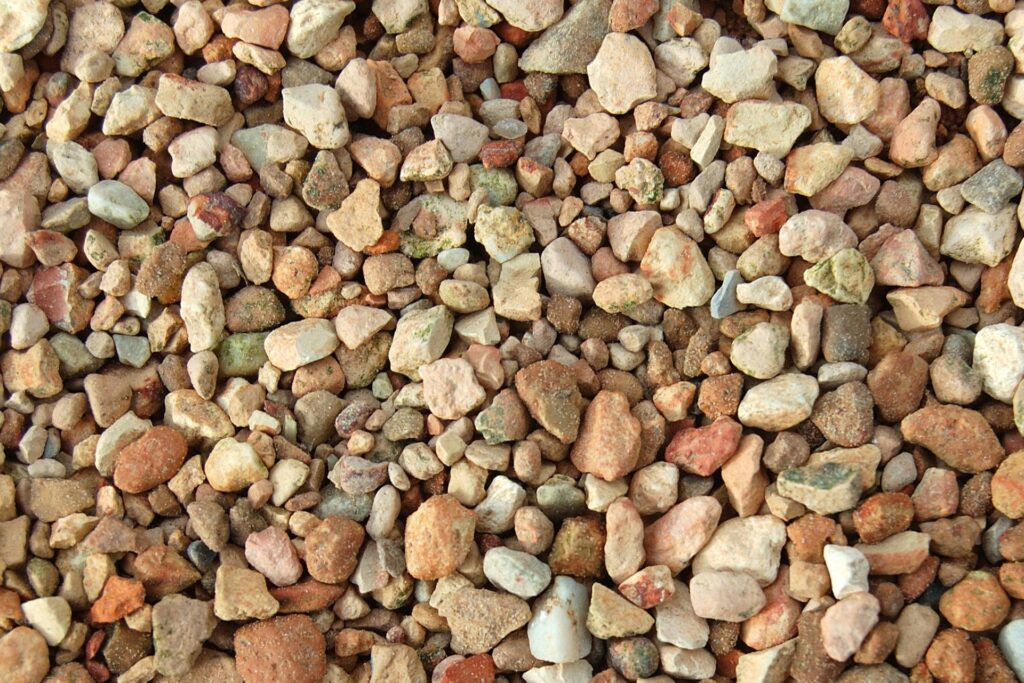
FAQs: About Do I Need Gravel Under Concrete
Why is gravel used under concrete?
Gravel is used under concrete to provide a stable base, improve drainage, and prevent water accumulation, which can cause shifting and cracking in the concrete slab.
What type of gravel is best for under concrete?
Crushed stone or gravel, often called “road base” or “crushed rock,” is ideal. It typically includes a mix of small to medium-sized stones that provide excellent stability and drainage.
How much gravel should I use under a concrete slab?
A typical recommendation is to use a layer of gravel that is 4-6 inches thick, depending on the type of soil and the intended use of the concrete slab.
Can I pour concrete directly on dirt?
Pouring concrete directly on dirt is not recommended as it can lead to poor drainage, shifting, and cracking. A gravel base ensures better stability and longevity.
What happens if I don’t use gravel under concrete?
Without gravel, the concrete slab may suffer from poor drainage, leading to water accumulation, which can cause the slab to shift, crack, and degrade over time.
Is gravel necessary for small concrete projects?
For small projects like garden paths or small pads, gravel may not always be necessary if the soil is stable and well-drained. However, using gravel can still provide added stability and drainage.
How do I prepare the ground for a gravel base?
Start by clearing the area of vegetation and debris. Then, excavate to the desired depth, ensuring the ground is level before adding and compacting the gravel layer.
Should I compact the gravel before pouring the concrete?
Yes, compacting the gravel is crucial. It ensures a firm, stable base that prevents settling and shifting of the concrete slab.
Can I use sand instead of gravel under concrete?
Sand can be used for smaller projects but doesn’t provide the same level of stability and drainage as gravel. For most concrete slabs, gravel is the preferred material.
Do local building codes require gravel under concrete?
Building codes vary by location. It’s important to check with your local building authority to ensure compliance with any specific requirements for gravel under concrete.
Conclusion
In conclusion, using gravel under concrete is crucial for ensuring stability, proper drainage, and preventing cracks in your concrete structures. This practice not only extends the lifespan of your concrete but also minimizes maintenance costs, offering significant savings over time. Embracing these benefits highlights the importance of incorporating gravel in your construction projects. Therefore, as you plan your next project, take the time to carefully consider the foundational elements, and don’t hesitate to seek professional advice to ensure the best results. Proper planning and execution can lead to a more durable and cost-effective outcome.
About the Author:
Mike Veail is a recognized digital marketing expert with over 6 years of experience in helping tradespeople and small businesses thrive online. A former quantity surveyor, Mike combines deep industry knowledge with hands-on expertise in SEO and Google Ads. His marketing strategies are tailored to the specific needs of the trades sector, helping businesses increase visibility and generate more leads through proven, ethical methods.
Mike has successfully partnered with numerous companies, establishing a track record of delivering measurable results. His work has been featured across various platforms that showcase his expertise in lead generation and online marketing for the trades sector.
Learn more about Mike's experience and services at https://theleadguy.online or follow him on social media:
